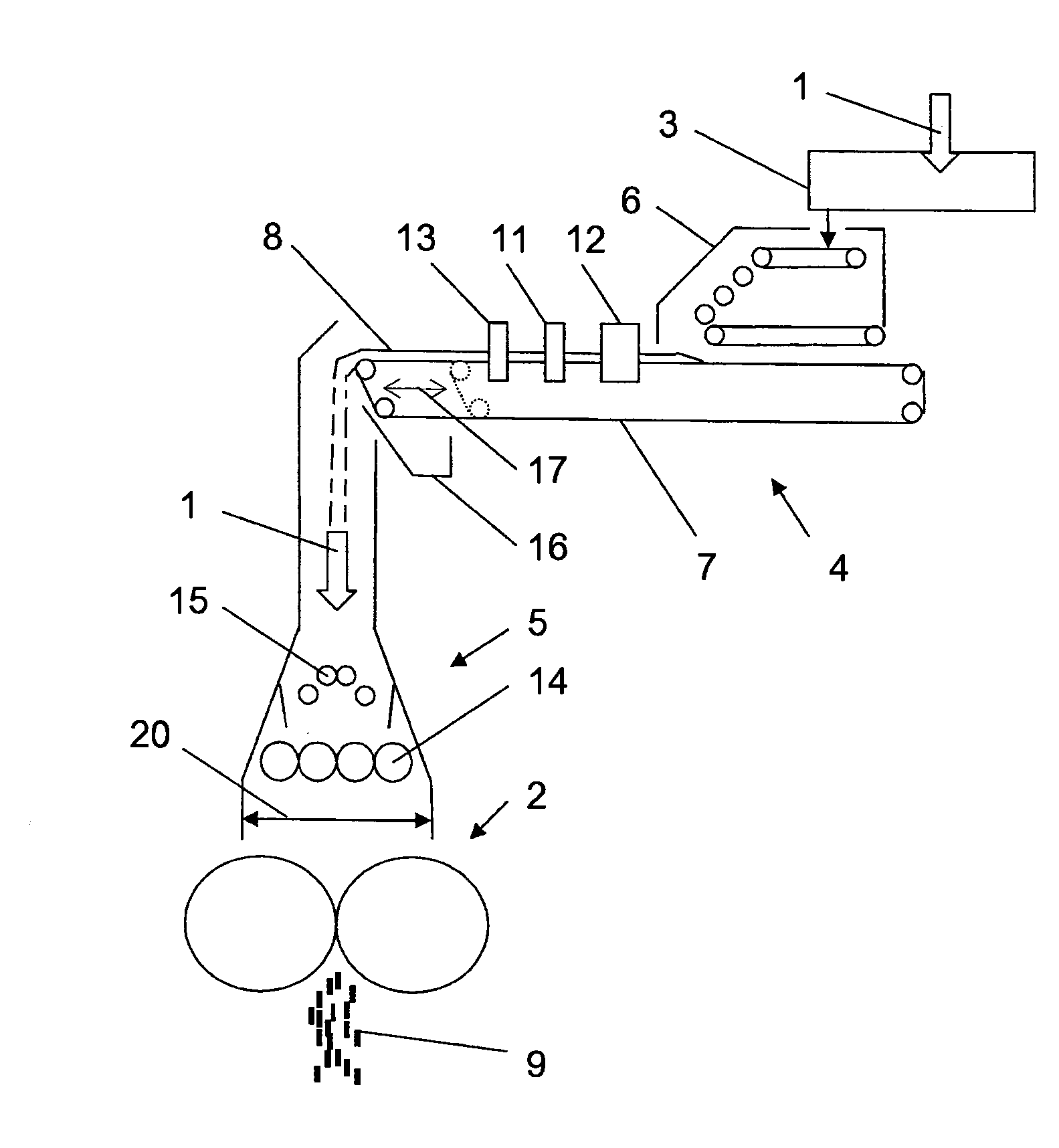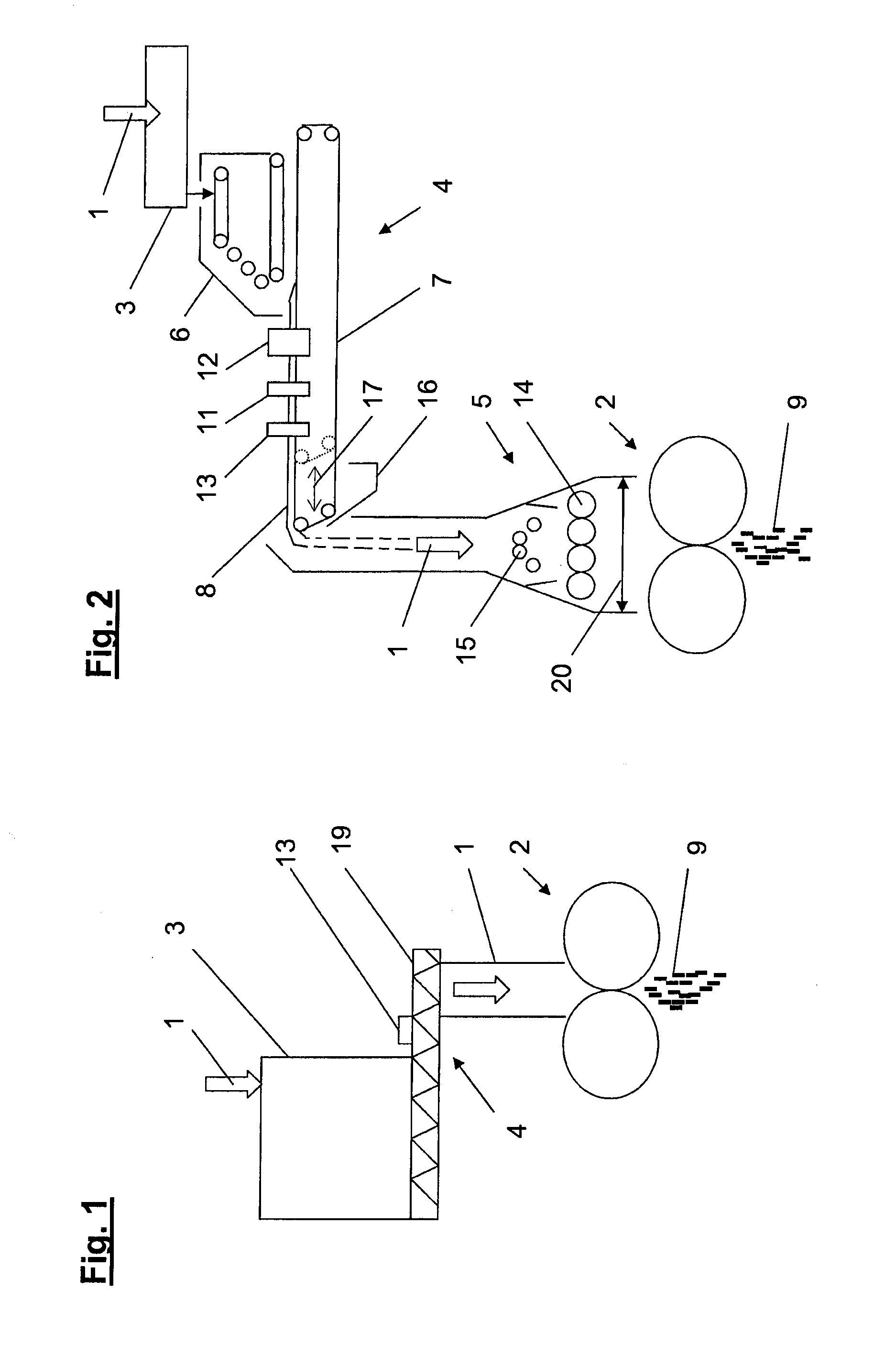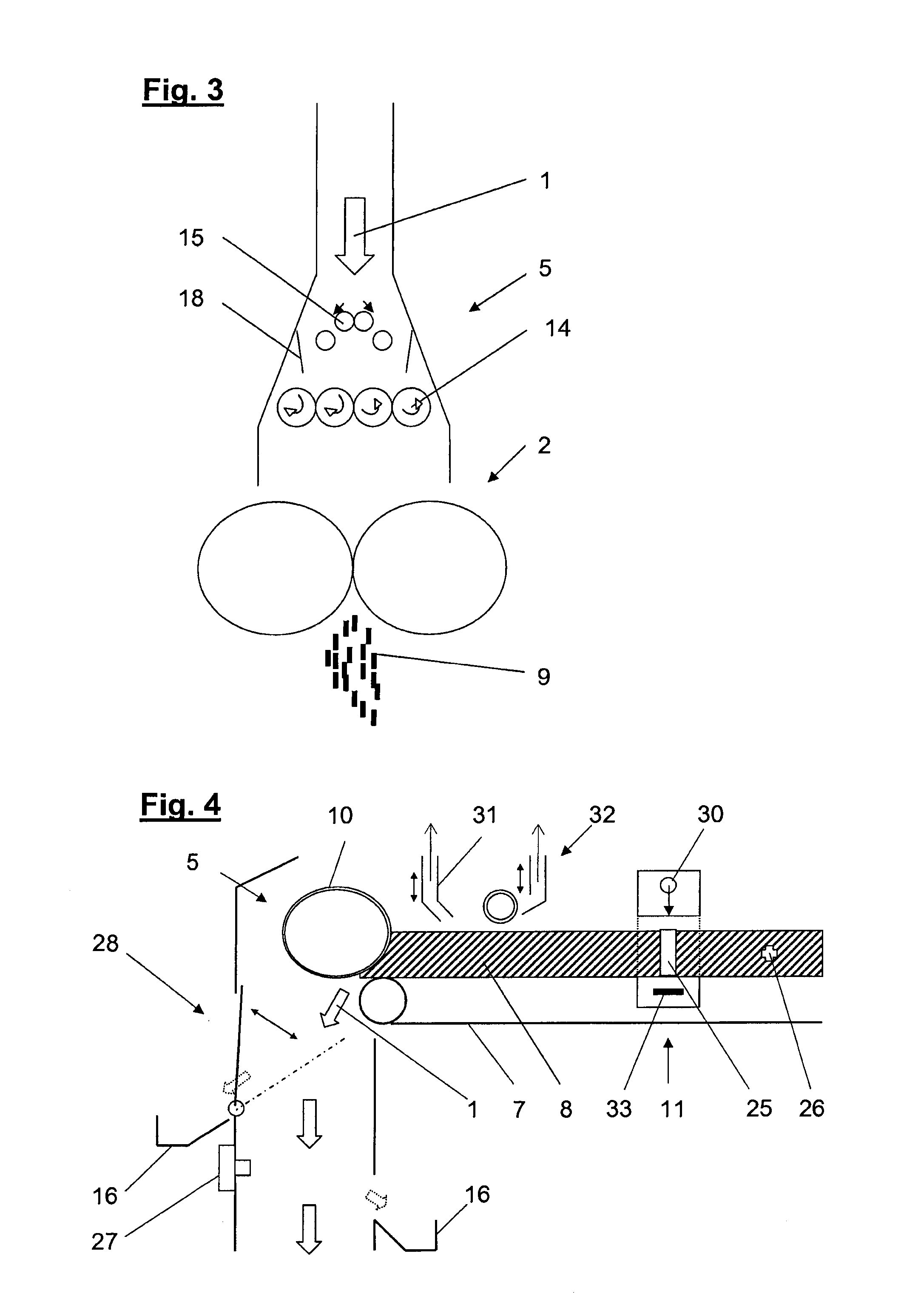Method and Installation for the Production of Pellets from Biomass in a Pelletizing Press for Use as Fuel in Furnaces
a pelletizing press and biomass technology, applied in the direction of granulation by pressing, granulation on conveyor belts, manufacturing tools, etc., can solve the problems of clustering of materials, reducing the maximum throughput per hour, and unsuitable for simultaneous loading of several metering devices, etc., to achieve detection and safety, increase the effect of weight and density
- Summary
- Abstract
- Description
- Claims
- Application Information
AI Technical Summary
Benefits of technology
Problems solved by technology
Method used
Image
Examples
first embodiment
[0038] a method for the production of pellets 9 from prepared biomass 1 in a pelleting press 2 for use as fuel in fireplaces, the biomass 1 being made of fibers, shavings or chippings containing cellulose and / or lignocellulose, with or without a binding agent and / or additives, and the biomass 1 being stored in a biomass bunker 1 following its preparation, which method is characterized by the following process steps: the biomass 1 is discharged from the biomass bunker 3 into a scatter device 6, a mat 8 made of the biomass 1 having a substantially uniform weight per unit area is formed by means of the scatter device 6 on a molding belt 7, the mat 8 produced on the molding belt 7 is examined by means of an examining device 11 for defective spots 25 and / or foreign substances 26, and the mat 8 is supplied to a pelleting press 2, at least parts of the mat 8 or a section of the mat 8 comprising defective regions 25 and / or foreign substances 26 being separated from the method for the produc...
fourth embodiment
[0041] the method according to one of more of the preceding embodiments characterized in that the radiography device determines the weight per unit area of the mat 8 in a grid of a square millimeter for detecting defective regions 25 or foreign substances 26.
fifth embodiment
[0042] the method according to one or more of the preceding embodiments characterized in that sections of defective regions 25 of the mat 8 or at least parts of the mat 8 are removed from the molding belt 7 and / or transferred to a refuse chute 16.
PUM
 Login to View More
Login to View More Abstract
Description
Claims
Application Information
 Login to View More
Login to View More - R&D
- Intellectual Property
- Life Sciences
- Materials
- Tech Scout
- Unparalleled Data Quality
- Higher Quality Content
- 60% Fewer Hallucinations
Browse by: Latest US Patents, China's latest patents, Technical Efficacy Thesaurus, Application Domain, Technology Topic, Popular Technical Reports.
© 2025 PatSnap. All rights reserved.Legal|Privacy policy|Modern Slavery Act Transparency Statement|Sitemap|About US| Contact US: help@patsnap.com



